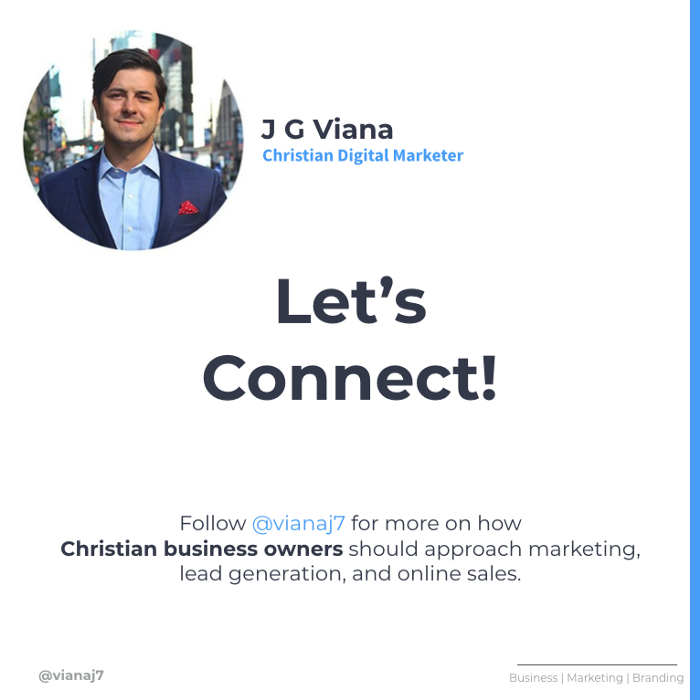7 Ways to Beat Facebook Ad Fatigue (Fast) — The Ultimate Guide
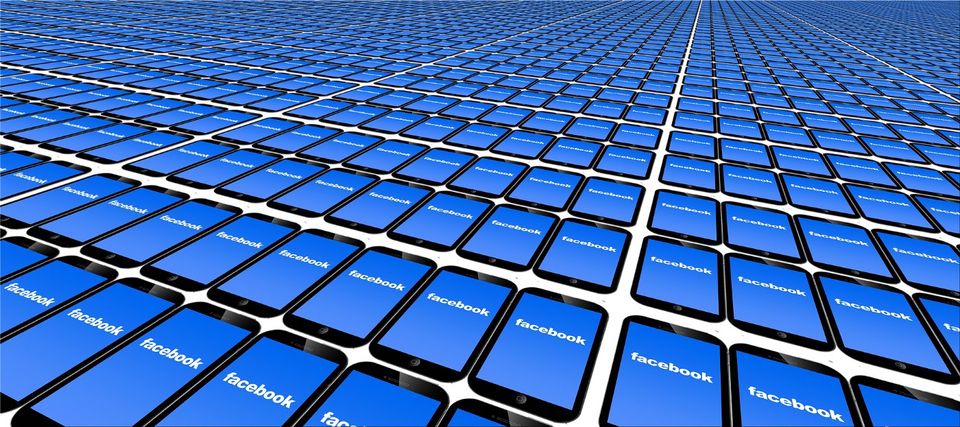
Did your campaign’s performance suddenly start to decline after a couple of weeks This is probably due to something called ad fatigue and it happens when your target audience is, well, tired of seeing the same ads over and over again?
What is Facebook Ad Fatigue?
Facebook ad fatigue is when people see the same ad too many times. High ad fatigue causes Facebook to severely limit your ad’s deliverability. You can measure ad fatigue on Facebook with the frequency metric.
How to recognize Facebook ad fatigue vs something else.
Spotting ad fatigue is easy: one or several key metrics in your campaign start to drop and the “frequency” metric starts to rise at the same time. In case your key metrics drop but frequency doesn’t increase or vice versa, this is not ad fatigue.

How to find the frequency metric in Facebook Ads Manager.
The frequency metric isn’t included as a column in the default column layout in the Facebook Ads Manager. Click the Columns dropdown to see the list of pre-built column layouts. Choose either Delivery, Performance and Clicks, or Customize Columns… and add it to any view you want.
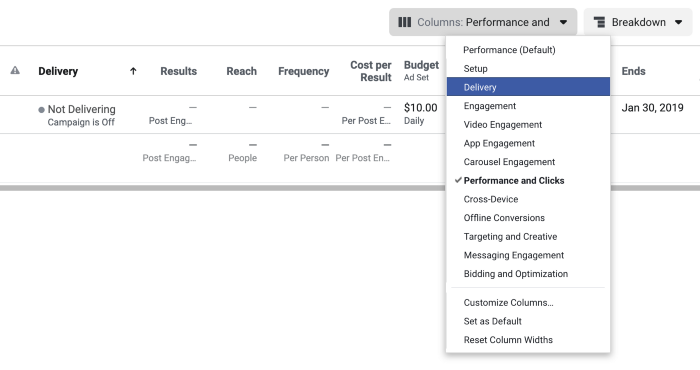
If you see your deliverability decreasing (impressions dropping) and your frequency count increasing, it’s safe to assume your ad and campaign is suffering from ad fatigue. If this sounds like what you’re experiencing, here are ten ways to fight ad fatigue (with examples)!
1. Automatically Pause Ads With High Frequency
Let’s assume you created several ad creatives and turned them all on. Once one of them reaches a high frequency, you want to turn these ads off. This will let the other ads run instead so deliverability increases while you can create more ads.
To create a Facebook automated rule, click the main Facebook Ads Manager menu and choose Automated Rules under Create & Manage.
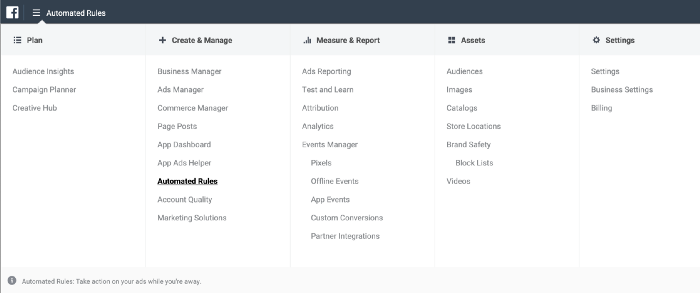
Click the green Create Rule button in the top right and the rule creator will pop up. Choose to target All active ads and Turn off ads as the action.
Under Conditions, you’ll choose how you want to turn off high-frequency ads. I recommend setting the Frequency cap to 2.4 and Impressions at least over 450 in the last 7 days and check it every 30 minutes. Obviously, you will need to fine-tune these parameters to your business and typical account activity. Here’s what that rule will look like:
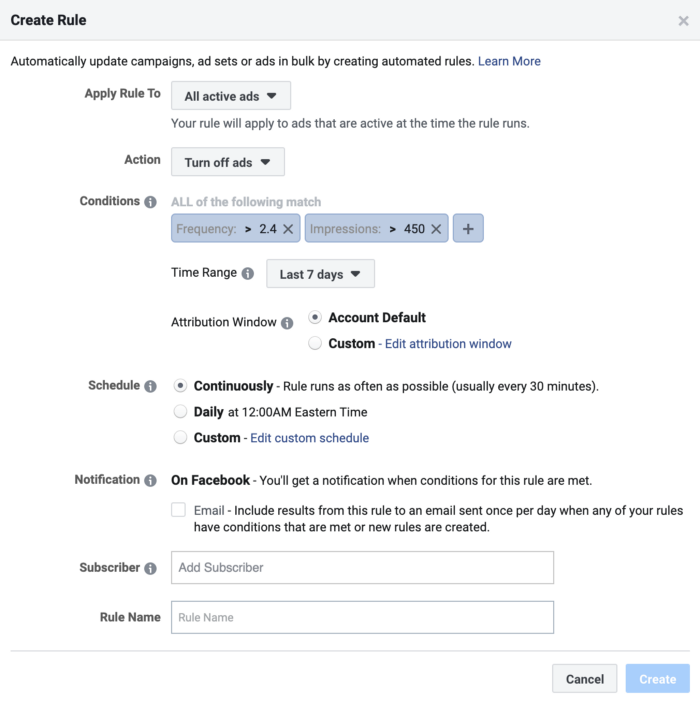
Of course, you can adjust the settings to your own objectives. Depending on the client or product I’ll adjust the fields. Some products need more visibility than others. Price points can be a good measurement of that. Impulse buys (under $25) don’t need a frequency higher than 1.
2. Create New Audiences and Ads
It’s great that we’re pausing ads with high frequency, but paused ads won’t make us any money. The next thing to do is to update your ad creatives or audiences.
How to quickly update ad creatives
- Change image background-color
- Change CTAs
- Change text and/or headlines
- Use new images/videos
- Minimize text in images to pass Image Text Check
How to quickly test new audiences
- Create lookalikes based on your key conversion metrics (purchase, time spent, engagement, etc.)
- Create audiences based on behavior
- Create lookalikes from by uploading customers or syncing your CRM
3. Automatically Decrease Budgets For High-Frequency Ad Sets
Pausing high-frequency ads will stop them from ever being served again, but what if it was a high converting ad/ad set and you don’t want to pause it completely? Another solution to decrease the budget. If your ad sets are being served to the same people too often you can decrease their bid/budget to decrease frequency.
What’s considered a “healthy frequency”? It mostly depends on your campaign objective and the audience you’re targeting. For most marketers, the ideal ad frequency is something between 1.01 and 2.99. I have some campaigns running and performing well with a 5–7 on hight ticket items ($399+). Some folks just need more reassurance than others when spending more. You may need to take a look at your funnel and time to convert in Google Analytics to see how many touchpoints your typical consumer has and then set the limits from there.
Here’s another automated rule you can try to decrease the budget for high-frequency ad sets. This rule is similar to our first rule where we paused high-frequency ads, except here I’m lowering the budget by 33% on the ad set level once per day if the frequency is over 2.4 and impressions are over 4,000 in the last 14 days.
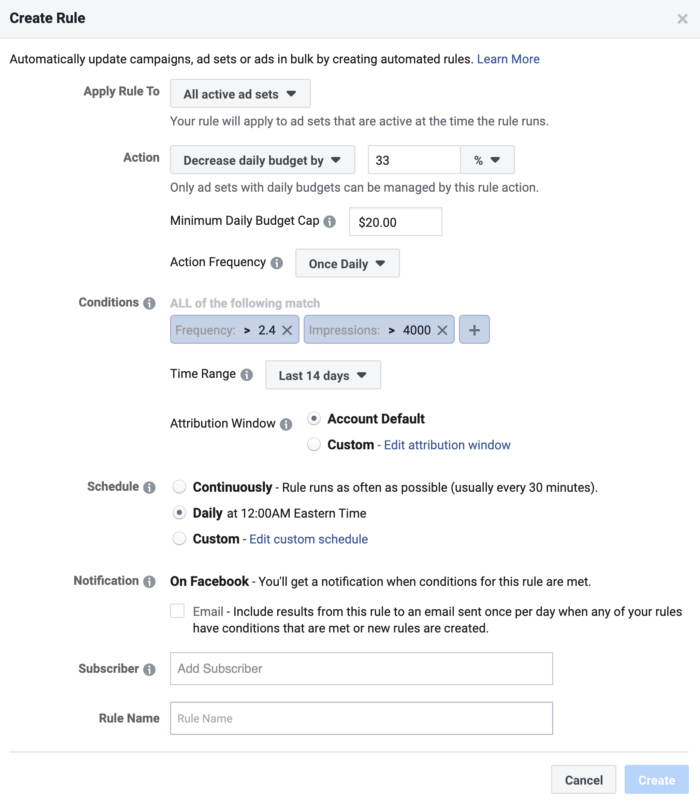
Note: Again, the amount you’ll decrease the budget, the frequency cap, and impression threshold are not industry standards. They 100% depend on your audience sizes, campaigns, and objective. For example, if you’re targeting micro audiences then perhaps a lower impressions threshold would work better. However, it’s recommended to always let ad sets complete initial learning before applying any rules to them.
So, this automated rule will decrease ad fatigue by limiting deliverability so people don’t see it as frequently without changing the ad creative.
4. Exclude Custom Audiences That Already Engaged With Your Ad or Brand
Excluding people that have already interacted with your website or engaged with your content can be used as another way to avoid ad fatigue on Facebook.
There are four ways to exclude such audiences:
Excluding website traffic (Facebook Pixel Data)
Create a custom audience and then exclude it in the ad set audience settings. In the example below, this is excluding purchasers in the last 90 days.
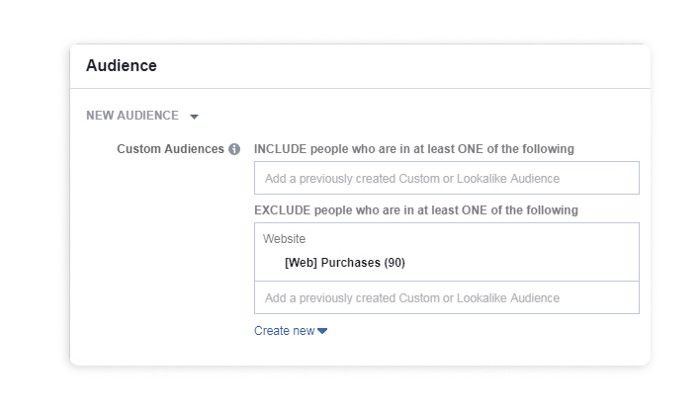
Excluding App Audiences
Create audiences using Facebook SDK for iOS or Android and exclude them the same way.
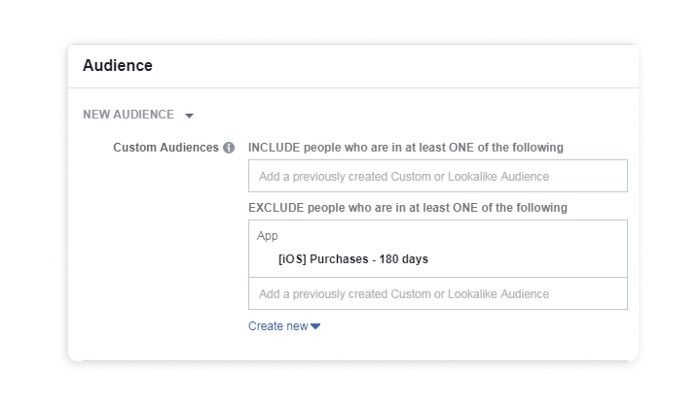
Note: Use this tactic if you have an app and/or run App Install or Conversion campaigns on Facebook. Facebook SDK is basically a piece of code that your app developer can put inside your app, thus allowing Facebook to track events within your app.
Excluding Audiences that engaged with Page and/or subscribed to your page
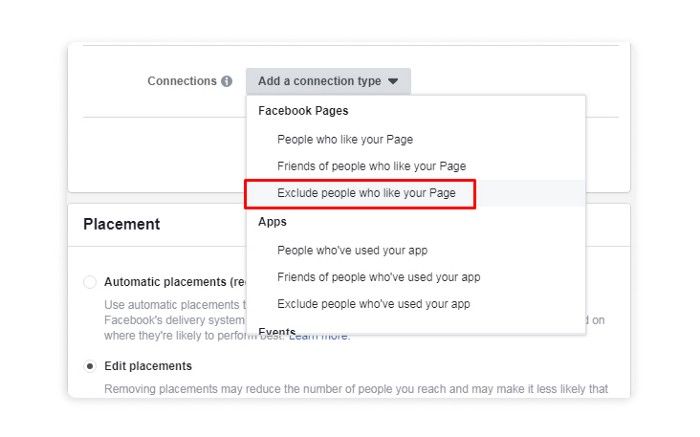
You can exclude all people who engaged with your app in the same way.
Excluding uploaded custom audiences
Upload a customer CSV file or sync an audience from your CRM with integration to Facebook Ads to remove existing customers, or identified bad fit leads.
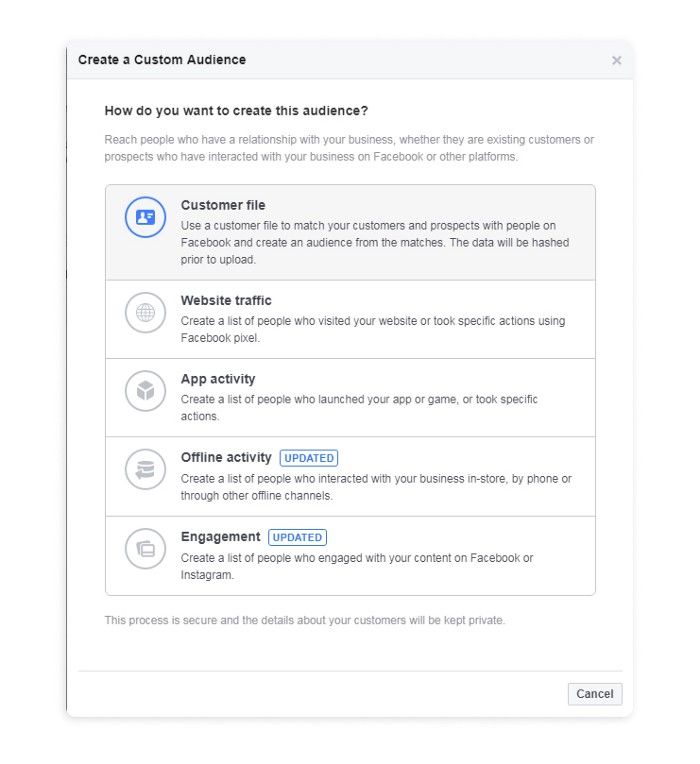
Then exclude them from your ad set just like in the examples above.
5. Limit Ad Deliverability by Running Ads on a Schedule (Dayparting)
Facebook has a built-in ad set scheduling that allows you to run ads only on certain days and at certain times. The only downside to how Facebook implements this feature. One, you have to set the ad set’s budget to a lifetime budget meaning you have to set an end date and budget limit for the ad set. And two, you have to set this manually for every ad set.
Nonetheless, dayparting, or running ads on a schedule, allows you to run your ads during the best days of the week and time of the day versus running them 24/7. This will cut down less useful impressions and decrease ad fatigue. Here’s how to set it up on the ad set. First, change your Budget and Schedule to Lifetime Budget.
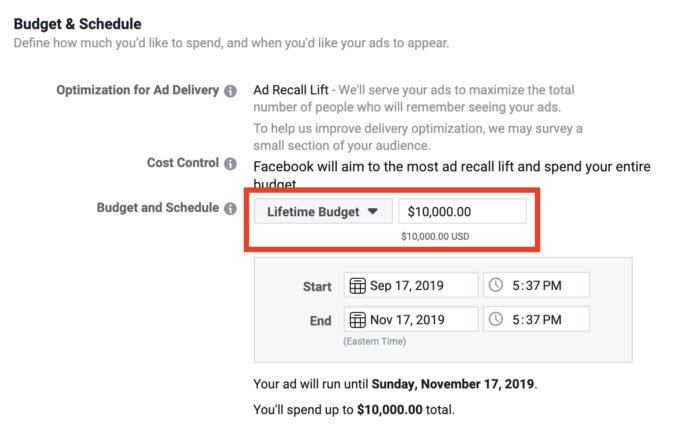
Then just below, choose Run ads on a schedule for your Ad Scheduling option. From here, you can choose your account’s time zone or the user’s time zone to select the days of the week and time of the day you’d like your ads in this ad set to deliver.
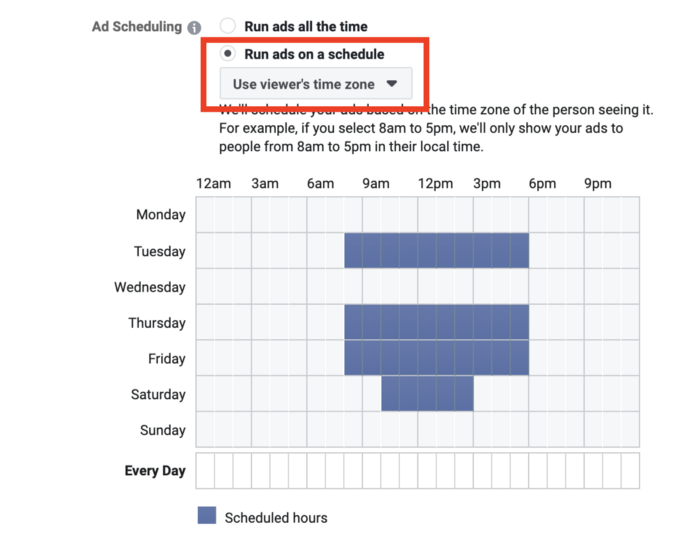
So in the above example, my ads will only run on Tuesday, Thursday, and Friday between 8 AM and 6 PM and on Saturdays between 10 AM to 3 PM. By bringing dayparting into your strategy, you can extend the life of your ad creatives and reduce ad fatigue with your Facebook ads.
6. Use the Reach Campaign Objective
If you have a campaign that is suffering from ad fatigue, you can try duplicating the campaign and simply change the campaign objective to Reach. Reach campaigns are usually used to more thoroughly reach larger audiences.
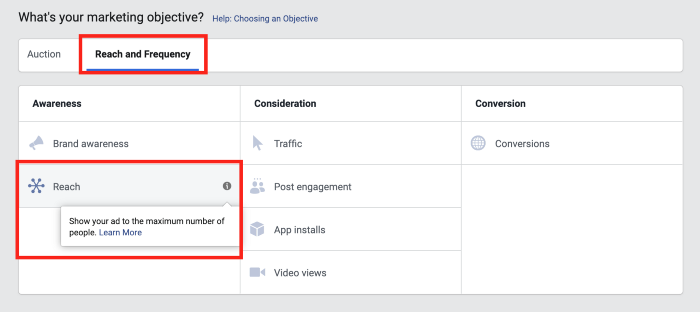
Reach campaigns are optimized for Daily Unique Reach by default, and have special options to limit frequency on the ad set. The default setting is no more than two impressions every seven days, but you’re able to customize to the frequency cap over a time period of your choosing.
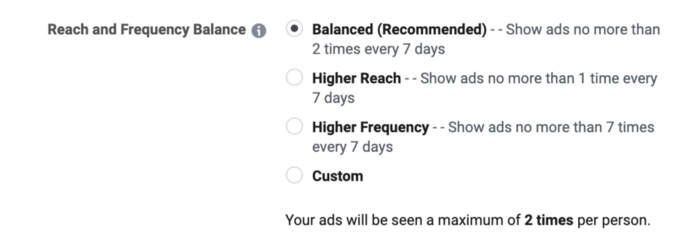
Although this may be the best way to avoid ad fatigue, you have to sacrifice not being able to optimize for conversions.
7. Optimize Ad Delivery for Daily Unique Reach
You might wonder why we would mention this option again when we already told you about the Reach campaign objective.
Sure, Reach Campaigns are naturally optimized for Daily Unique Reach but you can optimize for Daily Unique Reach in Traffic and Engagement campaign objectives as well.
To do that, go to your ad set within a campaign with the Traffic or Engagement objective and change its delivery optimization method to Daily unique reach.
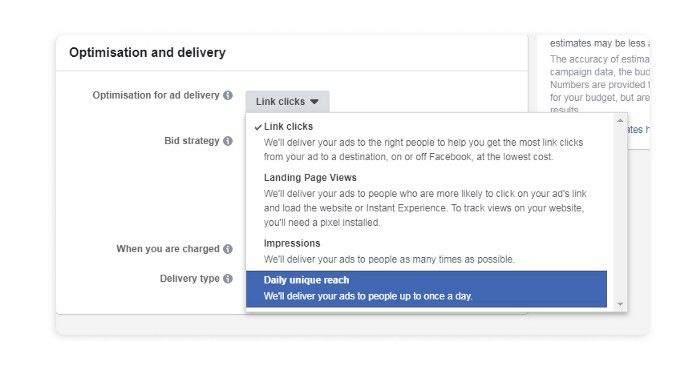
The difference between this method and the Reach campaign objective is you don’t have as much control on the frequency cap for ad delivery with this method.
Note: You can also optimize your Conversions campaign for Daily Unique Reach, but we don’t recommend doing that, as it will most definitely prevent Facebook from optimizing your campaign for Conversions and will result in a lower ROAS.
Bonus: Try Duplicating Your Ad Set
Although we have a lot of ideas on how the Facebook algorithm works, we don’t know exactly how it works. So when I’ve been stumped on an underperforming ad set before, I’ve found just duplicating it has worked to resurrect the campaign.
If an ad set just isn’t doing well, sometimes it seems to just hit a cliff and can never recover unless you start over.
Although it doesn’t focus on ad set duplication as a solution for ad fatigue, it can help in very much the same way. Give it a shot and see if it kickstarts your ads!
Bonus 2: Manage Placements the Right Way
It’s better to avoid setting ‘Automatic Placements’, especially when running a campaign that targets larger audiences.
When you use several different placements, Facebook will just choose the best-performing one and allocate most of your ad set budget to that one placement.
Creating different ad sets for different placements is good for speeding up and optimizing your campaign, especially when it comes to targeting on both Facebook and Instagram.
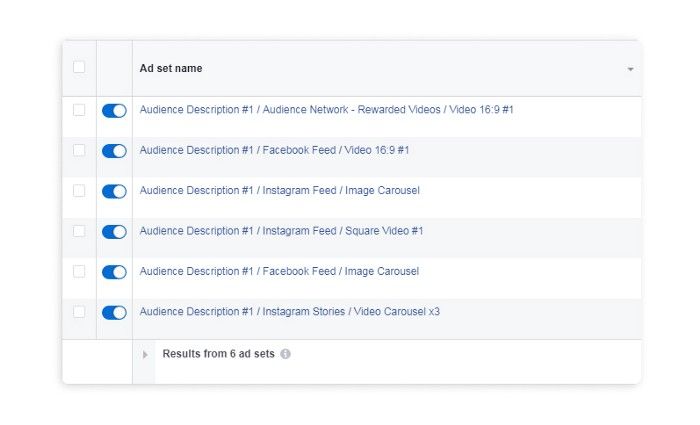
An example above shows all ad sets in a campaign divided into placements based on a platform, i.e. Facebook, Instagram and Audience Network.
Instagram Stories is a different placement too because you can’t target people on both Instagram Feed and Instagram Stories using images or videos of the same size unless you’re using Customized Assets.
Long story short, building ad sets for different placements is good when:
- You want to reach people across different platforms.
- You want even budget allocation across different platforms.
- You want to test which placement yields the best results.
And it’s also good for controlling ad frequency and avoiding ad fatigue.
What’s Worked for You?
I’d love to hear your stories about what you did to beat ad fatigue in the comments or reach out to me if you have any questions on how to implement these steps.
